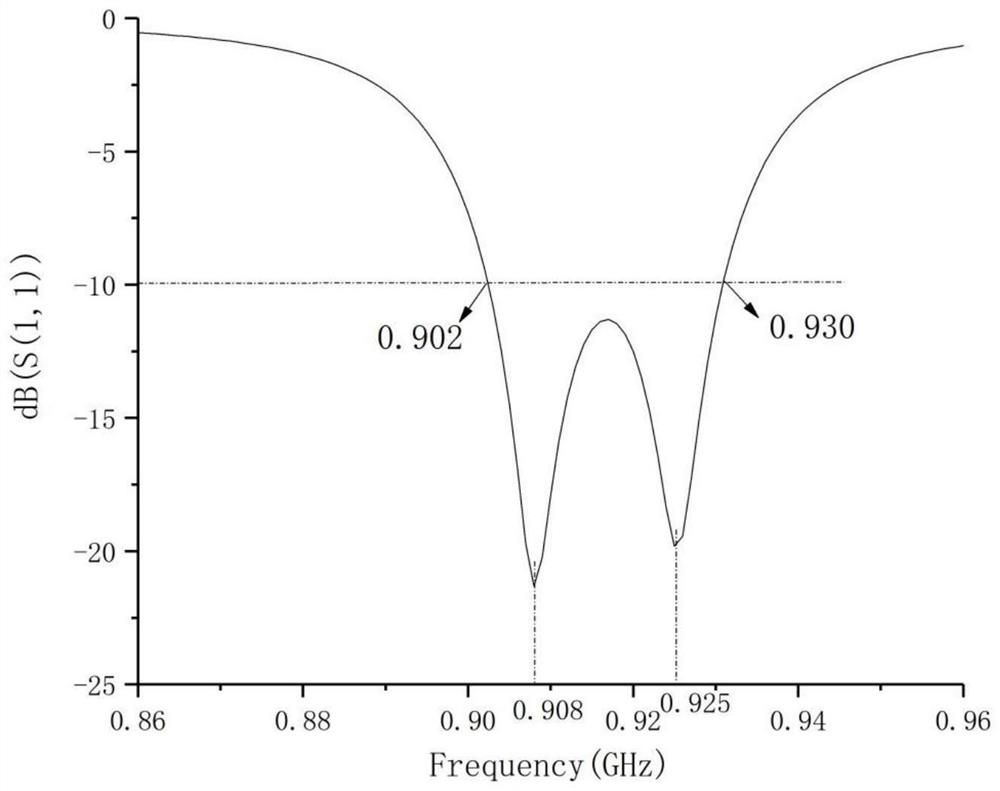Ultrahigh-frequency RFID anti-metal tag antenna based on microstrip structure
An anti-metal tag, ultra-high frequency technology, applied in the direction of antenna, antenna parts, radiation element structure, etc., can solve the problems of complex processing, high cost, narrow frequency band, etc., to reduce the actual size, widen the bandwidth, good Effect of Broadband Characteristics
- Summary
- Abstract
- Description
- Claims
- Application Information
AI Technical Summary
Problems solved by technology
Method used
Image
Examples
Embodiment
[0014] Example: such as figure 1As shown, a UHF RFID anti-metal tag antenna based on a microstrip structure includes a dielectric substrate and a radiation module arranged on the dielectric substrate. The dielectric substrate is a rectangular plate, and the radiation module is realized by a microstrip structure. The radiation module includes a radio frequency Chip, metal layer 1, first rectangular groove 2, second rectangular groove 3, third rectangular groove 4, first radiation unit 5 and second radiation unit 6, metal layer 1 is attached to the upper surface of the dielectric substrate, metal layer 1 The front end of the metal layer 1 is flush with the front end of the dielectric substrate, the rear end of the metal layer 1 is flush with the rear end of the dielectric substrate, the left end of the metal layer 1 is flush with the left end of the dielectric substrate, and the right end of the metal layer 1 is flush with the dielectric substrate. The right end surface of the s...
PUM
| Property | Measurement | Unit |
|---|---|---|
| Thickness | aaaaa | aaaaa |
| Length | aaaaa | aaaaa |
| Length | aaaaa | aaaaa |
Abstract
Description
Claims
Application Information
 Login to View More
Login to View More - R&D
- Intellectual Property
- Life Sciences
- Materials
- Tech Scout
- Unparalleled Data Quality
- Higher Quality Content
- 60% Fewer Hallucinations
Browse by: Latest US Patents, China's latest patents, Technical Efficacy Thesaurus, Application Domain, Technology Topic, Popular Technical Reports.
© 2025 PatSnap. All rights reserved.Legal|Privacy policy|Modern Slavery Act Transparency Statement|Sitemap|About US| Contact US: help@patsnap.com



